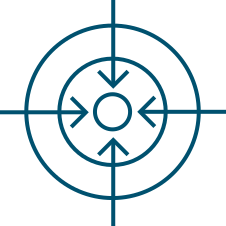Propeller Pinwheels

Learn about the history and science of flight then put inspiration into action.

LEARNING OBJECTIVE:
Learn about the story of the Vickers Vimy (G-EAOU) and the four men who undertook the flight.
Undertake a scientific exploration of a pinwheel and its relationship to a propeller.

SUCCESS CRITERIA:
Demonstrate understanding of the Vickers Vimy (G-EAOU) story.
Undertake a scientific study by questioning, hypothesising, noting and documenting.

GETTING STARTED
Have your students ever heard of Australia’s Great Air Race? Do they know the names Ross and Keith Smith? If so, what do they know about them? What is their understanding of the beginnings of air travel?
Get to know the story with one or both of these short videos:
The Greatest Air Race – Trailer
Epic Flight Centenary
Optional: Visit Australia’s Great Air Race (ADD SHORTHAND LINK) to learn more about the race and the Smith brothers.

Propeller Pinwheels
Vickers Vimy planes were made up of several parts including wings, body and propellers. Discuss the planes (using the diagram) and ask students to share ideas about how they moved through the air.
Optional: Introduce the role of the propeller by demonstrating a pre-made pinwheel or using the resource Amy’s Aviation: How Propellers Work.
As a class, hypothesise as to the direction of wind necessary to make the pinwheel turn. Now it is time for the students to make a pinwheel. Guide them through the instructions and support them in constructing and re-designing their propellers. Once the pinwheels are working, students must test them. Older students might use the worksheet individually, while younger students might work as a class.
What did your class discover about pinwheel propellers? Discuss their findings.

NEXT STEPS
There are so many things to learn, so dive deeper and sink your teeth into one or more of these single-lesson or longer format activities available on the Vickers Vimy Learn page.

CURRICULUM LINKS
F
Science – Describe how objects move and how factors including their size, shape or material influence their movement (AC9SFU02).
Pose questions and make predictions based on experiences (AC9SFI01).
Engage in investigations safely and make observations using their senses (AC9SFI02).
Year 1
Science – Describe pushes and pulls in terms of strength and direction and predict the effect of these forces on objects’ motion and shape (AC9S1U03).
Pose questions to explore observed simple patterns and relationships and make predictions based on experiences (AC9S1I01).
Suggest and follow safe procedures to investigate questions and test prediction (AC9S1I02).
Make and record observations, including informal measurements, using digital tools as appropriate (AC9S1I03).
Year 2
Science – Pose questions to explore observed simple patterns and relationships and make predictions based on experiences (AC9S2I01).
Suggest and follow safe procedures to investigate questions and test predictions (AC9S2I02).
Make and record observations, including informal measurements, using digital tools as appropriate (AC9S2I03).
Year 3
Science – Pose questions to explore observed patterns and relationships and make predictions based on observations (AC9S3I01).
Use provided scaffolds to plan and conduct investigations to answer questions or test predictions, including identifying the elements of fair tests, and considering the safe use of materials and equipment (AC9S3I02).
Follow procedures to make and record observations, including making formal measurements using familiar scaled instruments and using digital tools as appropriate (AC9S3I03).

